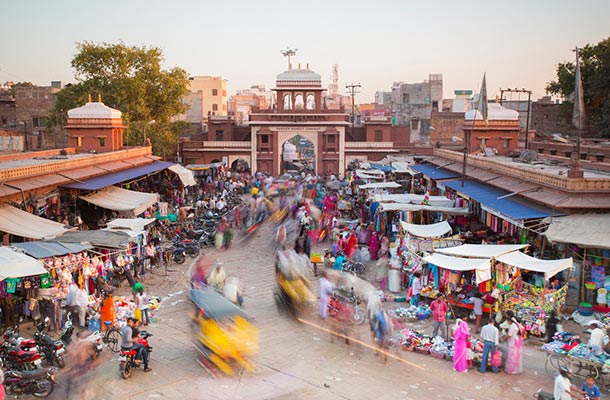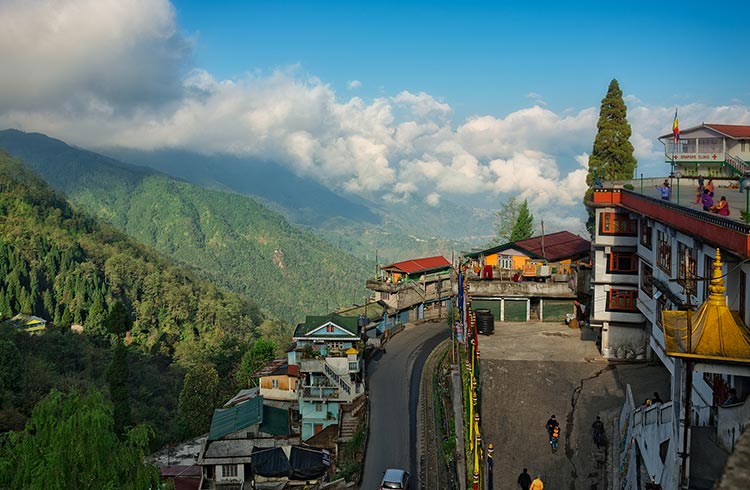Adventures of a Voluntourist in India
Before arriving in India, Colleen organized a volunteer placement in a quiet orphanage, so she was dismayed when the coordinator told her they were fully staffed, and reassigned her to a center for street boys instead.
 Photo © iStock/xavierarnau
Photo © iStock/xavierarnau
If you didn’t know any better, the street children in India all look the same: mismatched, stained clothing, bare feet, and wizened, shrewd eyes that—despite the child’s attempt to make them seem innocent—hint of having seen too much.
In Jodhpur, several of these children walked toward me in the bazaar with their hands outstretched, in search of spare rupees or anything else I might give. As I waved them politely away, I took several steps backward and was immediately and painfully sideswiped by an auto rickshaw (I believe that’s what they call “Instant Karma”).
In the village of Jojawar, I made the mistake of offering candies to a few of these children. Within moments, those few children swelled to a group of fifteen who surrounded me and aggressively grabbed at my pockets and bag when I had nothing left to give.
Street children can be a challenge to any traveler. There’s a part of you that wants to reach out to them, give them comfort, and make sure they’re safe—and then there’s a part of you that wants to politely wave them off as you step backwards into the path of a speeding auto rickshaw.
It was with these conflicting feelings that I reported for duty at a volunteer organization in New Delhi, India. Before arriving, I had organized a placement in a nice, quiet orphanage, so I was dismayed when the coordinator informed me that they were fully staffed at the orphanage and I was reassigned to a center for street boys instead. Ah, street children. I just couldn’t get away from them.
The organization had many centers throughout the city, but as luck would have it, I was assigned to a particularly seedy location at the Nizamuddin Railway Station—a location that is ideally placed because it’s where many of the center’s boys arrive after precariously hitching a ride atop a train or in an open-air car as they flee to the city in hopes of a better life.
On my first day, after a center employee briefly introduced me to the boys in Hindi (which I privately hoped included a directive to “behave yourselves!”), I was abandoned to face the bedraggled bunch on my own.
I looked down at their faces, half of which looked at me expectantly, while the other half sullenly ignored me and went about their business.
Thankfully, I remembered the learning games that I employed during my time teaching in Peru, so I launched directly into games to engage the boys who showed interest. By my second day at the center, I had almost full participation. By the third, the boys were in full bloom.
The boys weren’t the only ones who were gradually opening up.
As each day passed, the prickly ‘street boy’ façade that served to unite them in my eyes started shedding away as I began to see them as individuals. Among the group was Ankit, an intelligent boy who rode the rails from Northern India to escape from a life of poverty; Jitaen, the abused, malnourished boy who craved attention and would help me provide it by wrapping my arm around his scrawny bare shoulders; and wild little Chonda who, despite his young age of six, had lived a hard life on the street and had the scars to prove it.
Chonda was the smallest boy at the center, but he fiercely picked fights with boys twice his size. I had avoided intervening in these fights all week (preferring instead to let a center employee handle them), but during one particularly heated row, a burst of inspiration led me to start tickling Chonda at the height of the battle.
At the instant my fingers touched his little body, his face froze into a mask of utter shock. Then, he melted onto the floor in peals of laughter…just like any six-year-old would.
It’s true that to most travelers, street children all look the same. But every one has a name, a face, a personality, and stories all their own—stories that likely include moments of joy—but also include the horrors of poverty, abuse, neglect, and the day-to-day challenges of living on the streets.Stories that helped to build the tough outer shell that could make you forget that they were just children.
After working with those boys, street children will never look the same to me again.
About the Author
Colleen Finn is a globe-trotting, sight-seeing, day-tripping, frequent-flying traveler with a penchant for voluntourism. When not traveling, Colleen works as a technical consultant in Portland, Oregon, and applies her love of adventure and exploration to her local surroundings by enjoying the many outdoor activities that the Pacific Northwest has to offer.
Heading to India? Download our FREE Insider’s Guide!
Related articles
Simple and flexible travel insurance
You can buy at home or while traveling, and claim online from anywhere in the world. With 150+ adventure activities covered and 24/7 emergency assistance.
Get a quote

No Comments